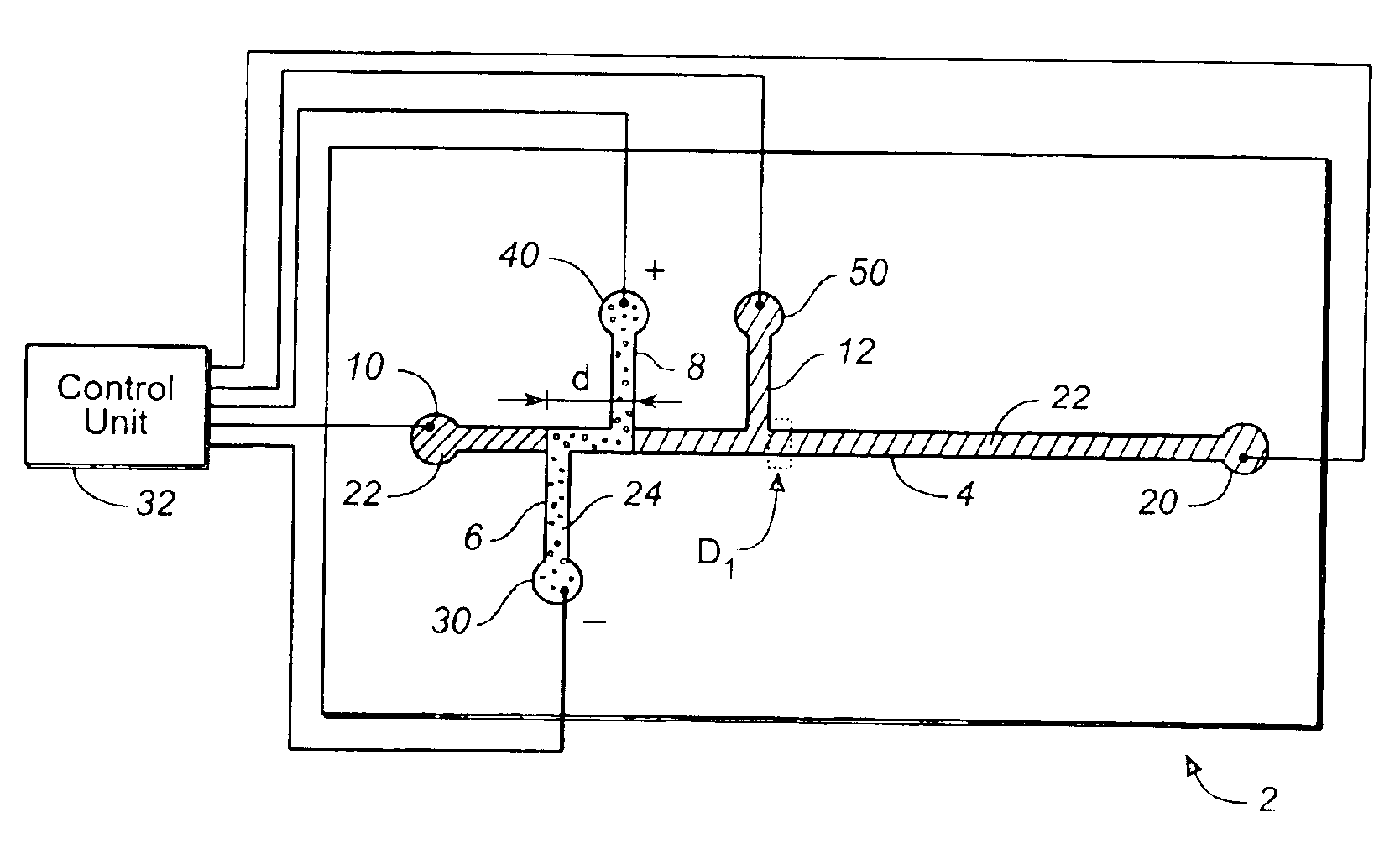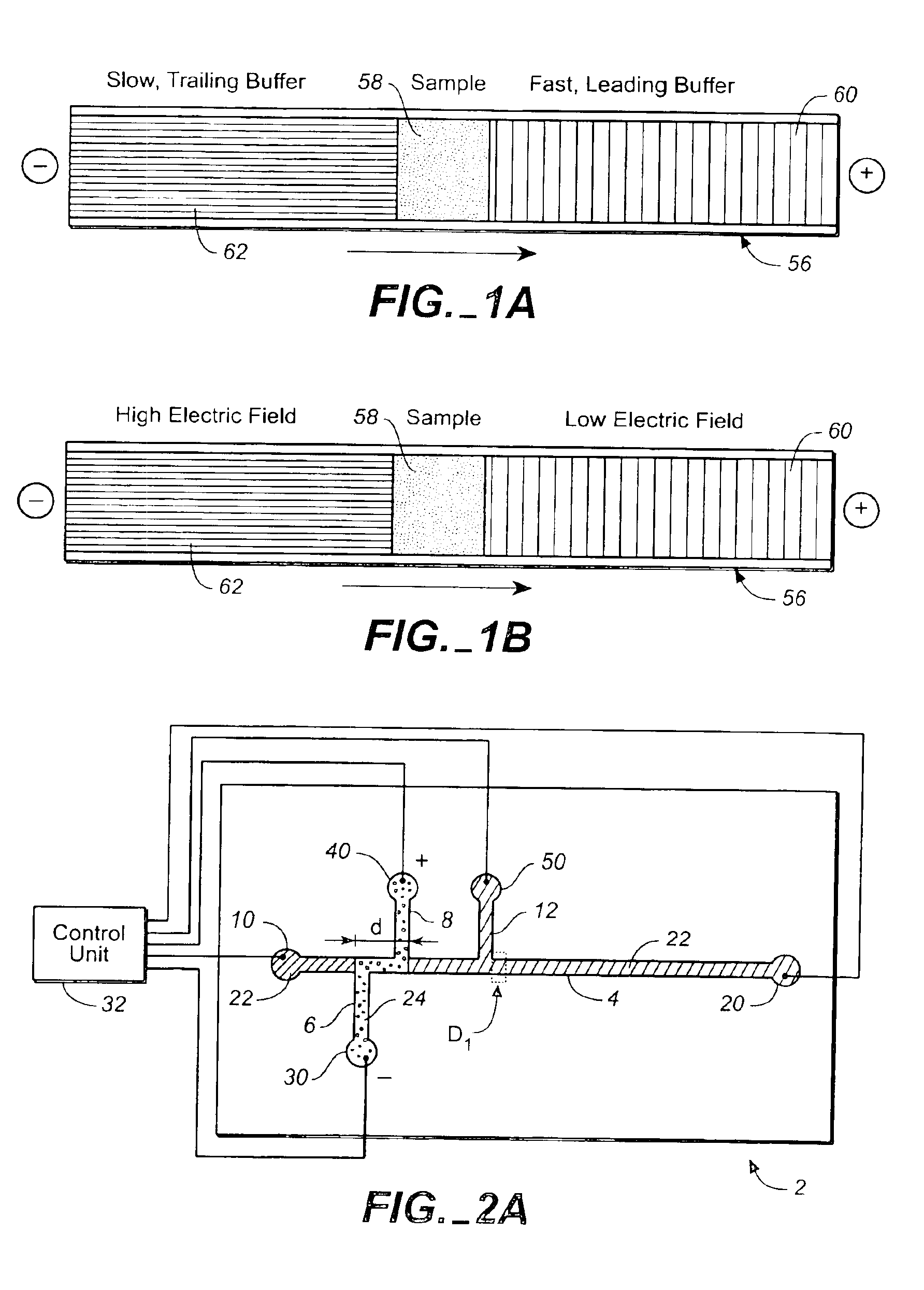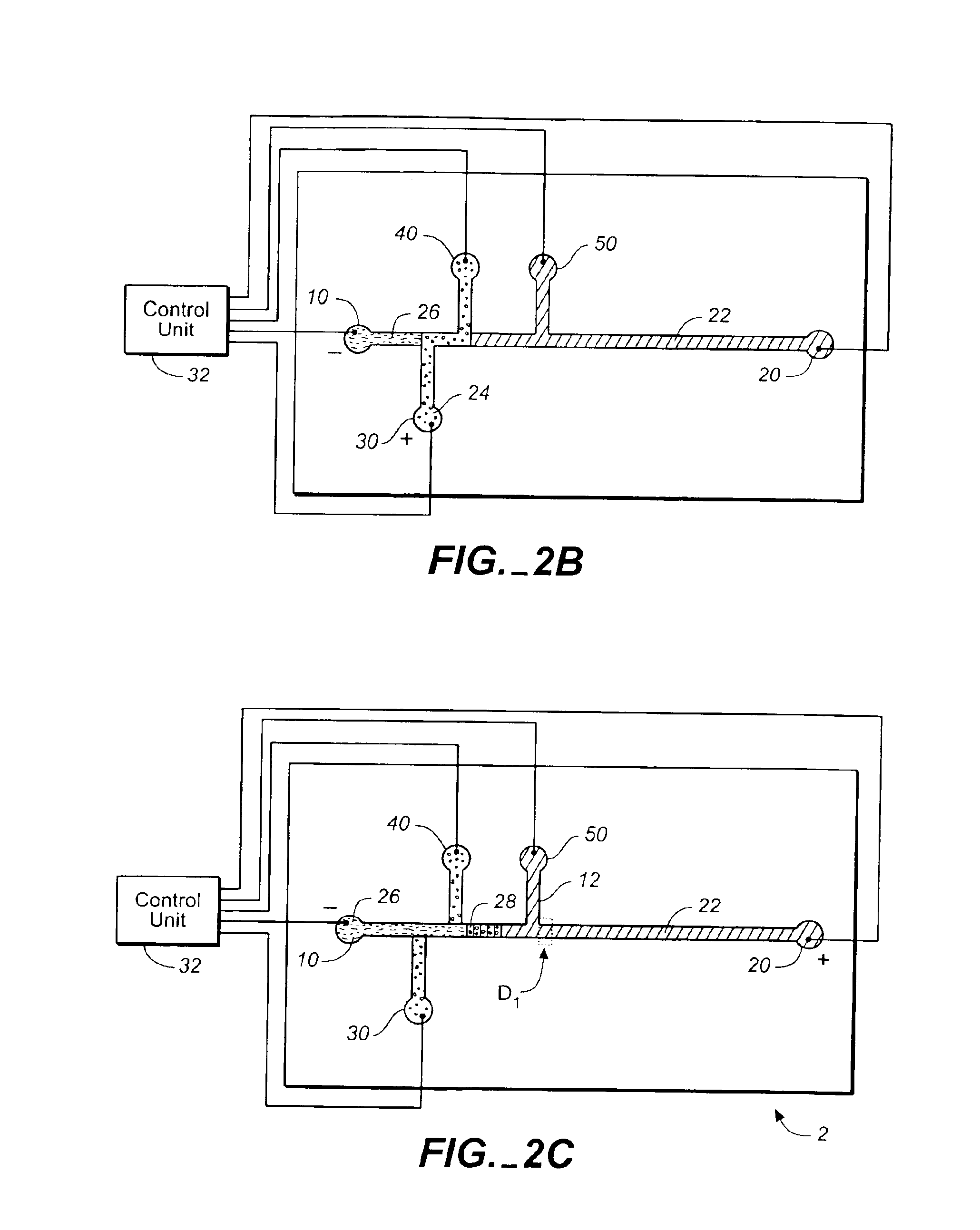Closed-loop control of electrokinetic processes in microfluidic devices based on optical readings
a microfluidic device and closed-loop control technology, applied in fluid pressure measurement, liquid/fluent solid measurement, peptide measurement, etc., can solve the problems of inconvenient timing of voltage application, and inconvenient visualization of dye concentration
- Summary
- Abstract
- Description
- Claims
- Application Information
AI Technical Summary
Benefits of technology
Problems solved by technology
Method used
Image
Examples
example
[0068]An ITP zone separation was performed on a microfluidic device using a closed-loop controller that automatically switched the voltages upon sensing a portion of a sample. The device was configured as shown in FIGS. 2A-2E.
[0069]A sample containing twelve different electrophoretic tag (eTag) reporters, each labeled with fluorescein, was added to the device and concentrated (or ITP stacked) as described in the text, above, corresponding to FIGS. 2A-2C. The concentrated sample was electrokinetically driven to detection point D1.
[0070]Detection point D1 was monitored using a photomultiplier tube (PMT) detector. The PMT detector collected the signal generated by laser induced fluorescence. An argon laser was directed at the detection point. The excitation wavelength was 488 nm. Emission was collected at 515-540 nm.
[0071]When the sample reached detector (D1), and the PMT detector recorded a large signal indicating that the sample had reached this detection point, the controller automa...
PUM
| Property | Measurement | Unit |
|---|---|---|
| angles | aaaaa | aaaaa |
| thickness | aaaaa | aaaaa |
| thickness | aaaaa | aaaaa |
Abstract
Description
Claims
Application Information
 Login to View More
Login to View More - R&D
- Intellectual Property
- Life Sciences
- Materials
- Tech Scout
- Unparalleled Data Quality
- Higher Quality Content
- 60% Fewer Hallucinations
Browse by: Latest US Patents, China's latest patents, Technical Efficacy Thesaurus, Application Domain, Technology Topic, Popular Technical Reports.
© 2025 PatSnap. All rights reserved.Legal|Privacy policy|Modern Slavery Act Transparency Statement|Sitemap|About US| Contact US: help@patsnap.com



